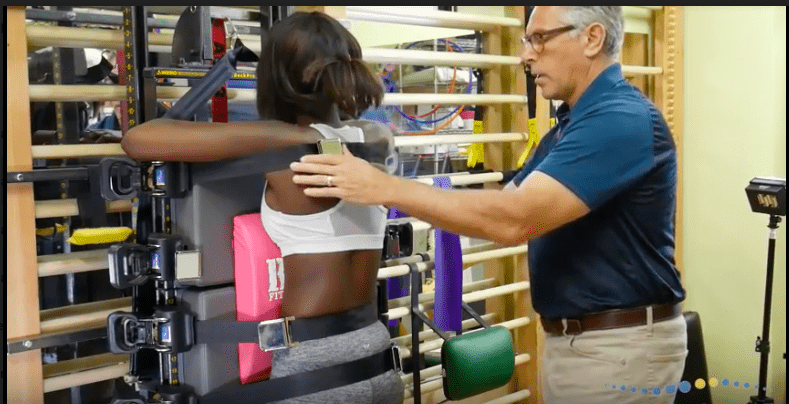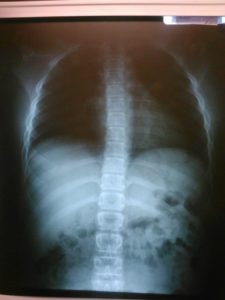Juvenile Scoliosis Treatment Objectives:
Juvenile Patients who follow the current Orthopedic management protocols end up in surgery nearly 100% of the time.
The objectives of Juvenile Scoliosis treatment are to;
a. stabilized the spine when the curvature is still small and flexible.
b. evaluate for neuroskeletal and neurohormonal imbalances via blood work and Functional Neurological Exam
c. offer early treatment to avoid environmental aggravation of the scoliosis curvature.
Juvenile Scoliosis Treatmnent Protocols :
a. Consultation, Exams and X-rays
b. Scoliscore genetic test to assess epigenetic factors
c. Construct short term and long term goals
d. Fit day brace, refer for night time brace
e. Teach daily activities, brace care
f. Exercise Introduction (2 day)
In curvatures which are progressive, a Combination Therapy may be recommended. This may require a referral to Orthotist.
The Spinecor brace if custom fitted and configured specifically for each patient depending upon the location and direction of the scoliosis.
Curvatures as small as 10 degrees may be treated at the discretion of your physician or chiropractor. Brace wearing schedules are similar for most adolescents and Juveniles; 20 hours of brace wearing with two breaks separated by 4 hours.
Full time wearing is expected within two weeks of the initial fitting. length of treatment depends upon when the diagnosis is made.
Patients typically wear the brace beginning at diagnosis and ending two years beyond their menses or maturation, or when the growth plates are completely fused. Males typically grow up until their 17th year, and may benefit from brace wearing into their late teens.
Treatment Outcomes -The Spinecor brace is the only orthosis which has been reported to permanently reverse the curvature associated with Scoliosis. Due to the ease of use, compliance is much higher with Spinecor, as is psychological well being of patients as compared to those who did not receive treatment, or were prescribed a rigid orthosis.
Treatment Indications -Patients diagnosed with Scoliosis from ages 1 thru adolescence with curvatures measuring from 12-50 degrees at the time of diagnosis are considered candidates for bracing. Candidates with smaller curvatures who are less mature are considered ideal, however, individual cases may be accepted on an elective basis with informed consent.
Contraindications – Neuromuscular scoliosis is considered a contraindication, however individual cases may be accepted on an elective basis with informed consent. Patients who experience significant progression (5 degrees or more) on three consecutive follow up evaluations may also be released from care, however individual cases may be exempt from release with informed consent.
Juvenile Scoliosis typically is a more aggressive type of scoliosis, and presents between the ages of seven and nine years old. The treatment of this type of scoliosis should begin treatment as soon as possible. Studies confirm early treatment can improve the likelihood of avoiding surgery. In my experience curvatures below twenty degrees cobb often can be resolved completely. Unfortunately all too often the orthopedic management of scoliosis in this age group is to “watch and wait”, despite the overwhelming evidence that early detection is the key to early correction. At Scoliosis Systems LLP, Dr. Deutchman and I believe in early intervention in this age group, offering flexible bracing and Spinecor when curvatures measure as little at 15 degrees.
To speak to a scoliosis care professional, contact Dr. Marc Lamantia or Dr. Gary Deutchman
1-800-281-5010
or email at [email protected]

